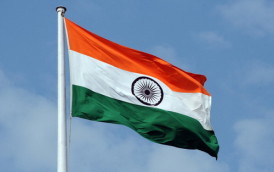The Overview of Cricket Tradition in India
James Nixon |
Cricket is undoubtedly the most popular outdoor sport in India. Each match draws enormous attention of millions of fans, especially if it is a clash with India’s arch-rival Pakistan. The India national cricket team news is definitely more important for the average Rajesh than the developments in national politics or economics.
No wonder that since the 19th century, cricket has been commonly referred to as the “gentlemen’s’ game”. There is a truth to that notion because cricket combines all characteristics of a true nobleman: honor and sportsmanship, passion and the thrill of competition, and of course graciousness and dignity in every move a professional cricketer makes. This sport has a long-standing tradition in the country and has become an integral part of Indian culture that is definitely worth knowing about.
A brief history of cricket in India
The first mentions of cricket date back to 1721, when a sailor from one of many merchant ships, which belonged to the East India Company, wrote in his diary that he and other members of the crew played the game of Kutch (that is how cricket was called back then) while waiting for the cargo to be loaded.
One can also find a vivid description of the colonial cricket in the famous novel The Posthumous Papers of the Pickwick Club by Charles Dickens. The first official cricket match took place on March 1845 between the officers of the English colonial forces and sipahis, the professional infantrymen recruited within India. This fact was recorded in the Sporting Intelligence magazine. The first professional cricket club named the Parsee Oriental Cricket was established three years later in Mumbai (previously known as Bombay), the current capital city of Maharashtra, marking the cornerstone of the development of organized cricket in India. The native Indians have initially been forbidden to access to the club, with an exception for Parsees, who represented the influential Zoroastrian community.
The first official cricket match within the auspices of the Parsee Oriental Club was held in 1864, and saw the teams from Madras and Calcutta go against each other. Back then, the Indian players couldn’t afford their own equipment so they had to use the hand-downs of players from the Bombay Gymkhana, a cricket club organized strictly for European colonists. Despite these minor drawbacks, the Indians showed immense potential in playing cricket. Only three decades since the establishment of Oriental Club, precisely in 1895, the all-Indian cricket team went against the professional English side which was captained by Lord Hawke. It was the first competitive cricket match which took place within the framework of the tournament known as the Presidency matches.
The comprehensible development of cricket in India began since the 1900s. Local princes were so fascinated by the game that they invited tutors from Europe to improve the cricket skills of Indian players. In 1934, the Board of Control of Cricket, which is currently the main national governing body for that sport, organized the first Ranji Trophy which remains among the most popular cricket tournaments in India to date. In 1952, India celebrated the first ever official Test victory over the English side. Since that time, India has established a strong foothold on the global cricket arena.
1971 saw India winning their first Test series, which took place in England, and in 1983 they lifted the Cricket World Cup. Starting from 1985, India enjoys unquestionable authority in the realm of international cricket, winning 150 Tests, making the appearance in 11 One Day Internationals appearances (winning two trophies: in 1983 and 2011), participating in 115 Twenty20 matches, and winning one T20 World Cup in 2007.
The cricket structure in modern-day India
The domestic cricket in India is divided into several categories, namely the first class competitions, the limited over tournaments, and the Twenty20 fixtures. The first class competitions include the Ranji Trophy, the oldest cricket championship that has a two-division structure and accommodates 37 teams from all over India; the Duleep Trophy, which can be compared to the All-Star Games in the United States, features three teams that represent different regions of India. The Irani Cup was named in honor of Z.R. Irani, who was one of the founders of the Board of Control of Cricket.
The limited overs or List A incorporate the Deodhar Trophy, a 5-over knockout tournament between the teams called India A, B, and C; the NKP Salve Challenger Trophy played between 3 teams that include 36 finest cricketers in India; the Vijay Hazare Trophy played out among 27 teams that represent 5 zones of India. Lastly, the BCCI Corporate Trophy which is the recently established competition, the first game took place in 2009, and usually takes place right before the Ranji Tournament.
The Twenty20 tournaments are considered the most popular in India since they usually attract massive crowds of supporters. The Indian Premier League includes 8 teams from different cities and is played in the double round-robin format with playoffs. The Sued Mushtaq Ali Trophy features as much as 27 teams that have to go through the knock out phase to win the tournament. The Indian Inter-State T20 Championship includes 27 teams from the Ranji Tournament which are split into 5 zones.




Leave a comment